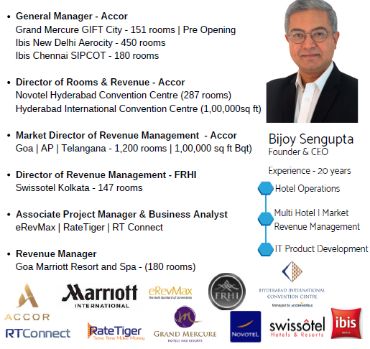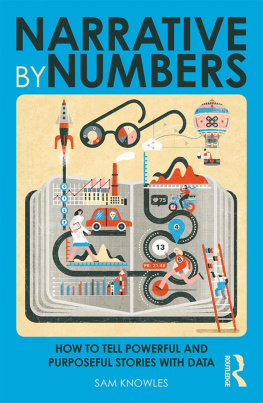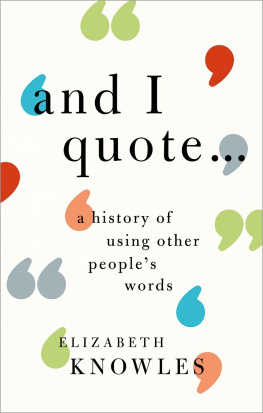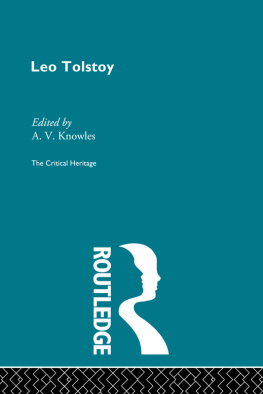Tom Knowles - Perspectives in Medical English
Here you can read online Tom Knowles - Perspectives in Medical English full text of the book (entire story) in english for free. Download pdf and epub, get meaning, cover and reviews about this ebook. genre: Business. Description of the work, (preface) as well as reviews are available. Best literature library LitArk.com created for fans of good reading and offers a wide selection of genres:
Romance novel
Science fiction
Adventure
Detective
Science
History
Home and family
Prose
Art
Politics
Computer
Non-fiction
Religion
Business
Children
Humor
Choose a favorite category and find really read worthwhile books. Enjoy immersion in the world of imagination, feel the emotions of the characters or learn something new for yourself, make an fascinating discovery.
- Book:Perspectives in Medical English
- Author:
- Genre:
- Rating:4 / 5
- Favourites:Add to favourites
- Your mark:
- 80
- 1
- 2
- 3
- 4
- 5
Perspectives in Medical English: summary, description and annotation
We offer to read an annotation, description, summary or preface (depends on what the author of the book "Perspectives in Medical English" wrote himself). If you haven't found the necessary information about the book — write in the comments, we will try to find it.
Perspectives in Medical English — read online for free the complete book (whole text) full work
Below is the text of the book, divided by pages. System saving the place of the last page read, allows you to conveniently read the book "Perspectives in Medical English" online for free, without having to search again every time where you left off. Put a bookmark, and you can go to the page where you finished reading at any time.
Font size:
Interval:
Bookmark:
HOTEL MANAGEMENT
102 THINGS TO KNOW TO RUN
A SUCCESSFUL HOTEL BUSINESS
Hotel Management Guide for Hotel Owners & Hotel Managers
{HOTEL MANAGEMENT SERIES}
Author
Bijoy Sengupta
Founder of BSG Hospitality
Founder & CEO of RGi1 Outsourced Revenue Management
www.bsghospitality.com
www.rgi1.com
+91 9176020000
SECTION I - INTRODUCTIONS
CHAPTER 1 | Who Should Read this Book?
Hi! My name is Bijoy Sengupta, and I welcome you to The Foundation Book for Hotel General Managers.
This book has been specifically designed for hotel owners, hotel managers or operators of small, independent hotels and mid-level managers of medium to large hotels who are grooming themselves to become general managers.
This book will also be useful for entrepreneurs who are looking to set up their hospitality establishments. It will give them an overview of the processes and tasks required to carry out sustainable hotel operations, which they can then adapt to suit the size of their operations.
This book will aide all those hospitality professionals who are looking to upskill and orient themselves towards growth and streamline their learning in becoming successful hotel general managers.
The book covers the range of responsibilities of a general manager. From managing daily tasks to their over accountability towards running a successful hotel. It will give you an idea about their typical day and an overall understanding of the goals of their role.
Completing this program will give you a head start if you are a young hospitality professional, and the edge to position yourself better when you apply for a general managers position.
--------
CHAPTER 2 | Introduction of the Author

I will be taking you through the book and will be with you every step of the way.
--------
CHAPTER 3 | Preview of the Book
The book has been divided into 13 sections. These sections are the primary functions of the hotel general manager, which further examine the details of each aspect of these functions, in a total of 102 Chapters.
Through this book, you will be able to understand the many hats the GM has to don in addition to being a leader, colleague, mentor and more importantly, being at guests service!
--------
SECTION II ALL ABOUT MEETINGS
Chapter 4 | Introduction to Meetings
Efficiency is the mainstay of any sustainable business, and it can only be achieved through effective communication within the company. A typical hotel has various departments that must function in tandem to carry out smooth operations. It is imperative that all staff members within these departments have all the necessary information and updates, daily, regarding the hotel and its guests. Meetings are a powerful medium through which all communication is affected, be it top down or bottom up.
In absolute simple terms, business meetings or meetings, is a gathering of two or more attendees in a formal environment (offline or online) for the purpose of making decisions, discussing concerns, resolving disputes or any updates regarding the company or its operations . They are a tool to exchange information, announce decisions or solve problems.
However, boring, or cumbersome they may sound, meetings are critical. But more important is the way they are conducted. Poorly run meetings with wrong attendees and non-achievement of objectives or reaching conclusions can lead to serious wastage of time and productivity. It is advisable to structure the meeting beforehand based on the components of a typical meeting.
The title of the meeting indicates the type or the purpose of the meeting, which we shall discuss in a moment. There are various types of meetings that are held daily, weekly, or monthly that we shall discuss in the subsequent Chapters.
Before we get into the types or meetings by their purpose, I will acquaint you with the Components of a Meeting -
A host is the person who calls the meeting either on their own accord or as delegated by a senior member of the team. They coordinate the meeting schedule (time and location), identify attendees, extend invites, and set the context for the meeting. The host also sets the estimated duration for the meeting for all the attendees to manage their calendars accordingly.
Any changes in the time or the location of the meeting is communicated by the host. The attendees RSVP to the host.
Depending on the scale and complexity of the meeting there can be a co-host who shares the responsibility.
The agenda of the meeting is created by the host with inputs from the relevant participants.
The agenda lists the attendees required for the meeting. It states the goals of the meeting in two or three brief sentences before listing the reports or documents required during the meeting.
A moderator is a person whose role is ensure the meeting runs smoothly, holds participants to time limits and tries to keep them from straying off the topic. The moderator usually takes notes and record the minutes of the meeting. However, any participant can also be delegated to do the same.
Attendees or participants all those staff members who have been identified as vital and appropriate to attend the meeting.
Minutes of the Meeting (MoM) are the key takeaways from the meetings and highlight the agenda discussed, actionable items and the next book of action. The minutes of the meeting provide continuity to recurring meetings and a record for ad-hoc meetings that can be referenced or reviewed whenever necessary.
The purpose or the nature of the meetings usually indicates the frequency of the meetings as well. Below are the categories under which the purpose of the meeting can be defined.
- Inform: They are the most concise meetings as the aim is to disperse specific information and take related questions. These meetings are organised as and when new information is available. This new information may be relevant to all employees or may be a group of employees.
- Status Update : These are recurring meetings that are intended to share updates regarding ongoing projects or processes. They tend to be short and to the point to bring all attendees up to speed or on the same page.
- Ideation / Consultation: These are primarily brainstorming or ideation sessions where the aim is to get the participants perspective on a policy, process, or an innovation.
- Problem Solving : Solving problems of dispute resolution are aimed at resolving a particular situation. The problem is described as clearly as possible and its impact of people, processes, or operations.
These meetings tend to go on till such a time a reasonable solution is arrived at with all participants onboard with the resolution. The leading idea is that the resolution must be in favour of the company and its values.
- Decision Making : Such meetings are the most critical as they impact the operations and people of the hotel directly. The situation, around which the decision needs to be made, is analysed and ideas are drawn. Various simulations are run to understand the pros and cons of the situations, before reaching a conclusion.
These meetings can spread out over several different meetings with the attendees meeting weekly or fortnightly or whatever frequency is decided based on the case being discussed and availability of attendees.
- Innovation :
New ideas breathe fresh air into an existing system. Usually, new ideas are solicited over a period through suggestions boxes placed in the Backoffice, incentive schemes etc. These ideas then evaluated on broad parameters such as relevance, clarity, usability, scalability, stickiness, and profitability.
Next pageFont size:
Interval:
Bookmark:
Similar books «Perspectives in Medical English»
Look at similar books to Perspectives in Medical English. We have selected literature similar in name and meaning in the hope of providing readers with more options to find new, interesting, not yet read works.
Discussion, reviews of the book Perspectives in Medical English and just readers' own opinions. Leave your comments, write what you think about the work, its meaning or the main characters. Specify what exactly you liked and what you didn't like, and why you think so.











